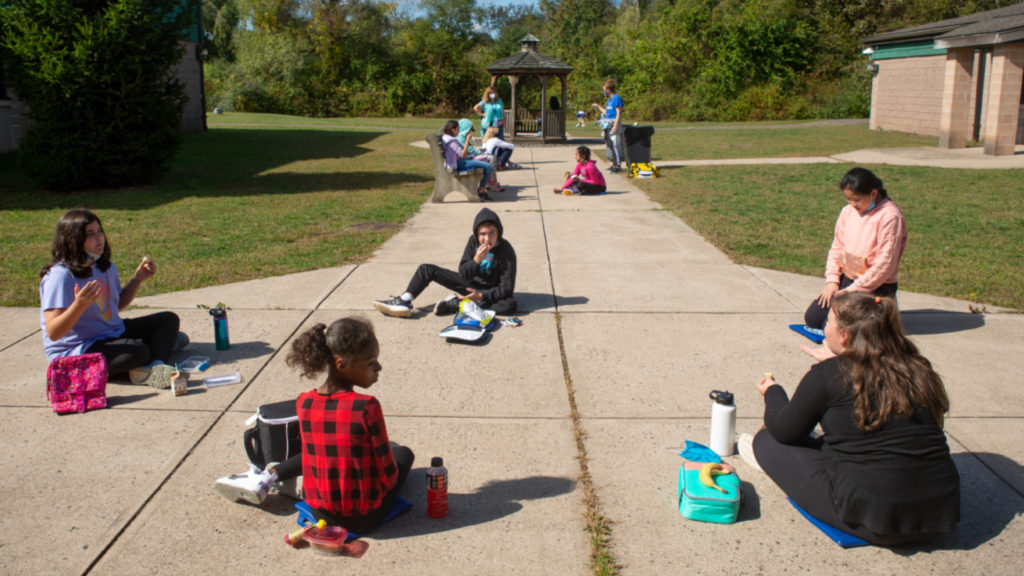For nearly a year, schools’ unpredictability has created stress and suffering for kids and families, especially in Black and brown communities where jobs and lives are also most at risk from the virus.
We’ve seen record learning loss, disengagement, depression, and signs of great stress in families.
But just as many schools struggle to serve their families, creative grass-roots responses have risen to fill institutional gaps. Policymakers are understandably eager to return to normal as soon as possible. But it would be a mistake to pave over the hundreds of community-based innovations in teaching, learning, childcare, and health and wellness that have sprung up around the country.
The media has highlighted stories of privileged families spending thousands to create personalized learning “pods.” Less well-known is the growth of public pods, also known as learning centers or hubs, set up by community-based organizations, self–organized mutual aid groups, and freelance volunteers.
Pods share an ethos of mutualism with community-based tutoring, homework help, and counseling and mentoring programs. They enable community members to better help one another. And they provide an unprecedented natural laboratory for districts to work with families to codesign the services they need.
While much of this work is happening at organizations outside the traditional fabric of public education, a growing number of school systems have taken notice and begun to shift how they work. We are now collaborating with six of them.
The existential threat of enrollment loss, the unique flexibility of unrestricted federal relief funding, and a painful year of reflection on the subjugation of Black and brown families have led school districts to collaborate in power-sharing partnerships with families, volunteer groups, and community-based organizations.
Already, we are seeing the potential for more flexible, innovative roles for district staff, new talent pipelines into and alongside certificated teaching, revamped pathways between the K–12, higher education, and workforce sectors, and a leveraging of districts’ substantial financial resources to support organizations in their communities.
Indianapolis was one of the first communities where partnerships between the school system and local nonprofits spawned new supports for students learning remotely. The Mind Trust understood that churches and neighborhood groups had deep wells of trust in communities and worked with them to stand up small learning environments before school started last fall. Leaders at The Mind Trust and Indianapolis Public Schools are now planning for these hubs to become a durable feature of student support, one that persists long after district buildings have reopened.
In North Carolina, Edgecombe County Public Schools opened learning hubs that provide in-person learning and social opportunities to students in the district who have chosen to continue learning remotely. The district is working with principals to design a “spoke-and-hub” approach to schooling that offers more community-based learning projects and uses flexible scheduling to make schooling more compatible with students’ jobs or internships.
Many leaders with whom we speak hope that the structures and services they are building now will persist and fundamentally redefine how they show up for their communities.
Though many kids will do better in regular in-person school, some are thriving with new kinds of adult support and the freedom to pursue ideas that light them up. Long after the COVID-19 pandemic is over, learning pods and arrangements that let schools resume online learning whenever necessary—knowing students can still receive in-person support if they need it—can hedge against possible future disease outbreaks and climate-caused shutdowns.
This is an exciting moment, but past experience tells us that the old familiar ways will likely reassert themselves once schools feel out of mortal danger. Innovations will be discarded or wither away, depriving families, communities, and schools themselves of benefits being proven on the ground right now.
The innovations are at risk simply because the old arrangements—kids attending in-person school in large groups, teachers providing all instruction, community assets sidelined—are familiar and serve the interests of the best-organized interest groups. Parents who will want a return to full-time in-person instruction after the pandemic are in the majority. Teachers unions will also want a complete return to the status quo to protect their collective bargaining agreements.
Even well-intentioned relief efforts backed by new federal COVID funding could turn out to be palliatives that relieve strain on the status quo of schooling rather than catalysts to maintain a more diverse array of public support for learning.
For example, some plans for a “national tutoring corps” would require that tutoring be delivered in school buildings during school hours, often by district employees. This would crowd out grassroots homework-help programs that meet families where they are, at far lower cost and with far more community, parent, and student agency.
To avert the inevitable rush to put things back just as they were before the pandemic, governments and foundations should be building evidence about which innovations—online instructional programs, tutoring programs, pods, and other student support environments—are effective, for which kids and under which conditions.
The window of opportunity to learn from these new arrangements and produce durable changes will likely close in a matter of months.
People must get organized. Families that have come to rely on COVID-era innovations need to start urging school boards and municipal governments to continue them. Nonprofit groups that sponsor innovations must organize now to press state legislators to eliminate strings on public funds and other regulations (seat time and class size requirements, closed-shop arrangements that prevent community-based workers from becoming teachers).
Rather than using this unprecedented funding to double down on the very systems and practices that have failed our communities for decades, state and local advocacy groups should ensure that states and school districts invest stimulus funds in lasting changes that will preserve new educational arrangements that worked for families during the crisis and hold open the space of community-based agency and innovation.
Now is the time not only to invest in helping students recover from the pandemic, but to build an anti-fragile education system that is less brittle, less monolithic, more family-centric and more capable of meeting students’ individual needs—now and in the future.





